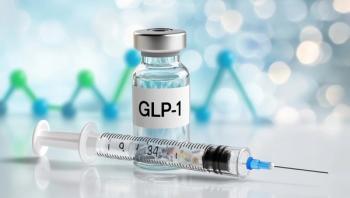
How Effective and Safe Are GLP-1s for Weight Loss?
Key Takeaways
- GLP-1 RAs, particularly semaglutide and tirzepatide, outperform older medications in achieving significant weight loss in adults with and without type 2 diabetes.
- Semaglutide and tirzepatide met efficacy benchmarks, with gastrointestinal side effects common but serious adverse events similar to placebo.
Semaglutide and tirzepatide led to the most weight loss across 22 trials, while liraglutide remains a cost-effective alternative as its patent expires.
A systematic review of more than 40,000 adults found that glucagon-like peptide-1 receptor agonists (GLP-1 RAs) such as semaglutide and tirzepatide significantly outperform older medications like liraglutide in achieving clinically
Semaglutide 2.4 mg and tirzepatide 5 mg, 10 mg, and 15 mg met efficacy benchmarks in adults with and without diabetes, according to the review authors, while semaglutide 50 mg only met benchmarks for adults without diabetes. Gastrointestinal effects were common across studies, but the risks of pancreatitis and serious adverse events were similar between GLP-1 RAs and placebo.
“Our findings support the use of GLP-1 RAs, particularly semaglutide 2.4 mg and all doses of tirzepatide, as highly effective strategies for weight management in adults with and without diabetes,” the authors said. “Future research should prioritize head-to-head comparisons, long-term cardiovascular and hepatic outcomes, and personalized approaches considering gender and ethnicity.”
Weight Loss in Adults With Type 2 Diabetes
Among adults with T2D, tirzepatide and semaglutide achieved the greatest weight loss. Tirzepatide is manufactured by Eli Lilly and
The SURPASS-1 trial (
Dulaglutide and liraglutide demonstrated more modest effects, and efpeglenatide and albiglutide failed to meet either efficacy benchmark. In one study, dulaglutide 3 mg and 4.5 mg led to substantially greater weight loss compared with the 1.5-mg dose, but neither benchmark was met for the review. Another study showed increased weight loss with higher doses of liraglutide, and more than 35% of patients lost at least 5% body weight with the treatment; however, the mean weight loss difference did not reach 5%. A 56-week trial showed significant weight loss with efpeglenatide, but this effect decreased after week 30, and a 52-week trial of albiglutide—which has been discontinued in the US—did not meet either efficacy benchmark.
Although liraglutide 3 mg demonstrated only modest weight loss and did not consistently meet efficacy benchmarks compared with newer GLP-1 RAs, the review authors noted the drug has shown benefit in lowering the risk of major cardiovascular events, preventing new-onset persistent macroalbuminuria, and slowing declines in kidney function among individuals with T2D.
“With its patent expiration and the availability of a generic form, liraglutide may become a more cost-accessible option despite its lower efficacy,” the authors said. “This shift might increase its use despite its relatively lower efficacy, highlighting the ongoing need to balance cost, accessibility, and clinical outcomes in obesity management.”
Weight Loss in Adults Without Type 2 Diabetes
Among adults without diabetes, tirzepatide again produced the greatest weight loss: up to 22% of baseline body weight at 72 weeks with 15 mg weekly, around 20% with 10 mg weekly, and 13.7% with 5 mg weekly. This was followed by oral semaglutide 50 mg with 13% weight loss in one study and injectable semaglutide 2.4 mg weekly with weight loss around 12%.
Liraglutide 3 mg also led to weight loss but to a lesser degree, around 5%, and its effects appeared more modest in trials with intensive behavioral interventions, which may have minimized between-group differences. Data were not included for dulaglutide, efpeglenatide, or albiglutide.
GLP-1s were generally well tolerated among adults without T2D. The review found no increased risk of pancreatitis or serious adverse events compared with placebo. However, across patients with and without diabetes, most GLP-1 agents (except albiglutide and efpeglenatide 2 mg) were more likely to cause gastrointestinal adverse effects such as nausea, vomiting, diarrhea, and constipation. The frequency of these symptoms was similar across different tirzepatide doses, indicating a consistent safety profile within the class.
Clinical Considerations for GLP-1 RAs
The review authors noted several limitations and considerations for interpreting their findings. Across trials, there was substantial variability in lifestyle interventions, with some studies including intensive behavioral therapy while others lacked structured diet or exercise programs. This inconsistency makes it difficult to directly compare outcomes and may not reflect real-world adherence patterns. Follow-up durations also varied, meaning long-term efficacy and safety could be underestimated in shorter trials. The limited number of studies for each specific GLP-1 RA and dose also restricted the ability to formally assess publication bias.
The authors emphasized the need to account for demographic differences across studies. Many trials enrolled predominantly White participants, one had an all-Asian cohort, and multiple had imbalanced proportions of each sex. Evidence suggests
References
- Velji-Ibrahim J, Radadiya D, Devani K, et al. Efficacy and safety of glucagon-like peptide-1 receptor agonists for obesity management in adults with and without type 2 diabetes: a systematic review. J Obes. 2025;2025:3897161. doi:10.1155/jobe/3897161
- Ukhanova M, Wozny JS, Truong CN, Ghosh L, Krause TM. Trends in glucagon-like peptide 1 receptor agonist prescribing patterns. Am J Manag Care. 2025;31(8):e228-e234. doi:10.37765/ajmc.2025.89778
- Klein HE. Real-world use of GLP-1s yields less weight loss than clinical trials. AJMC®. June 10, 2025. Accessed November 17, 2025.
https://www.ajmc.com/view/real-world-use-of-glp-1s-yields-less-weight-loss-than-clinical-trials
Newsletter
Stay ahead of policy, cost, and value—subscribe to AJMC for expert insights at the intersection of clinical care and health economics.













































